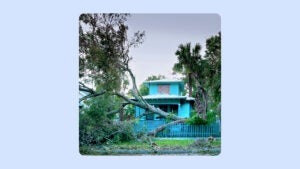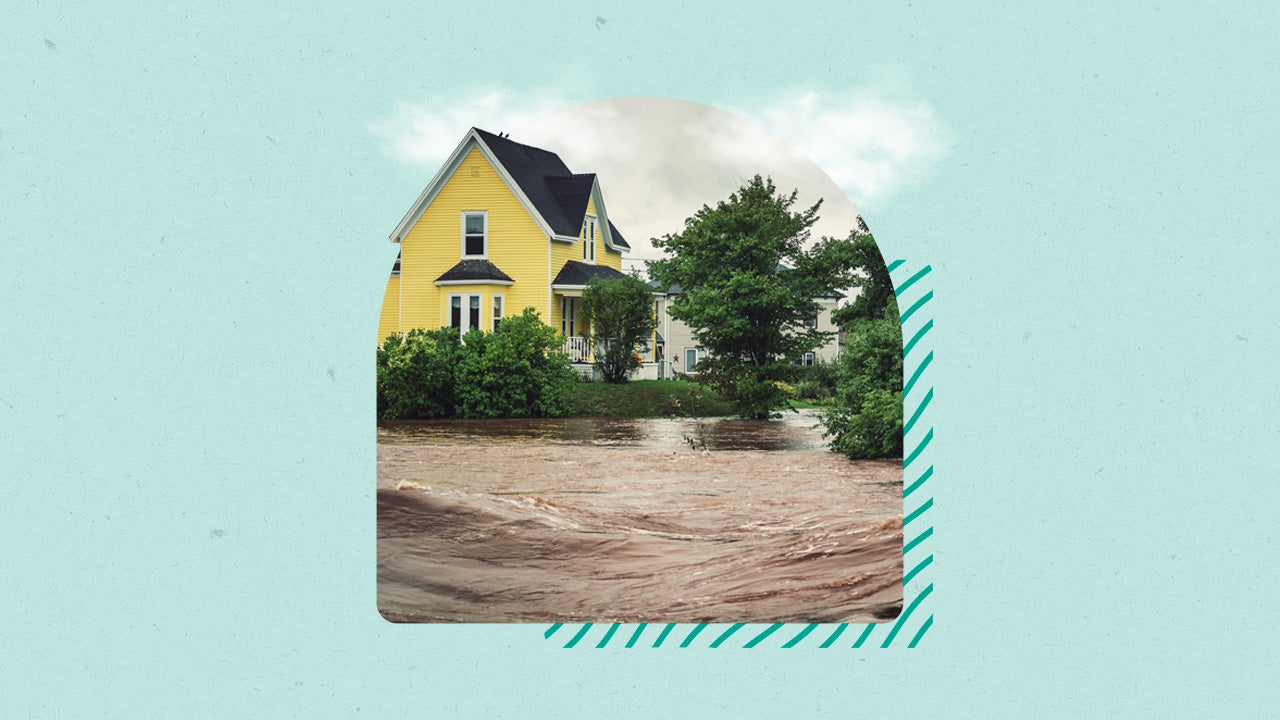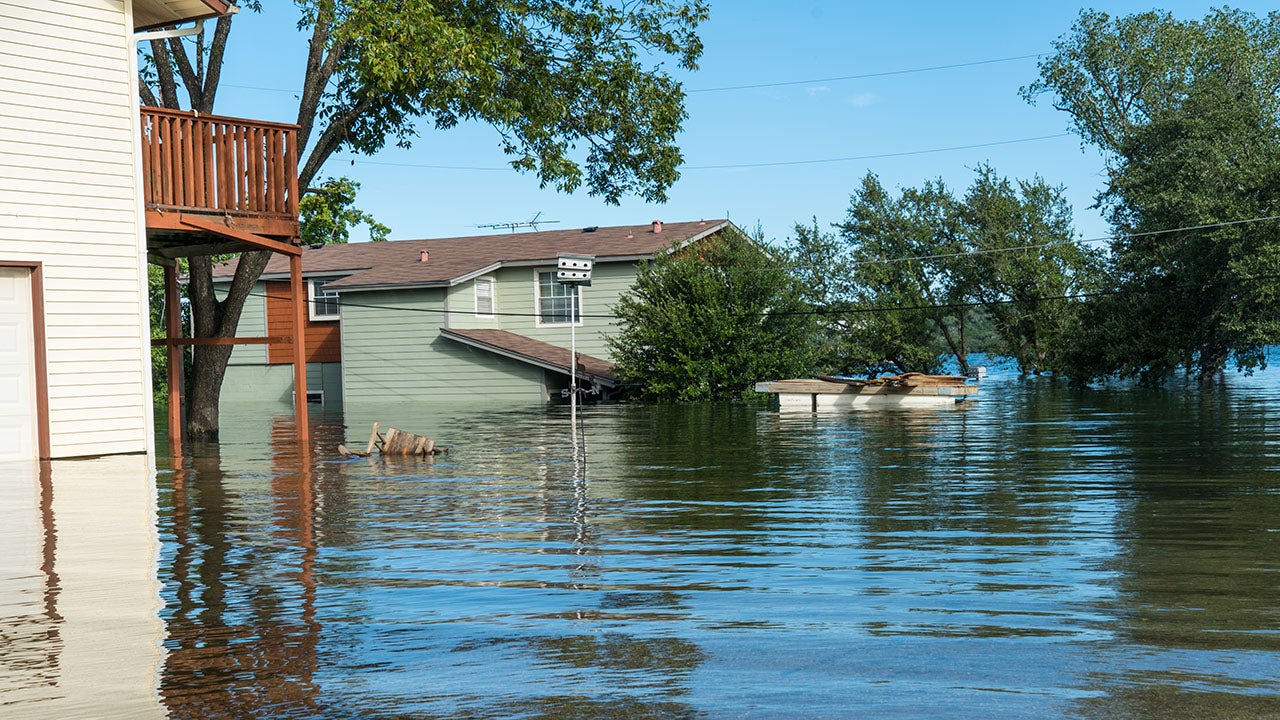Many homeowners think they don’t need flood insurance. Hurricanes like Helene are teaching them costly lessons.

The first floor of Susan Rall’s home in St. Petersburg, Florida, was flooded with two feet of water from the storm surge caused by Hurricane Helene in late September, even though she’s two streets away from the ocean.
Everything she couldn’t carry to the second floor was destroyed, she says. It’s now piled on the side of the street in front of her townhouse condominium, including antique furniture and a $3,000 leather couch, along with the waterlogged belongings of her neighbors.
“It’s been a nightmare,” Rall says. “I spent the night on my second floor praying the water wouldn’t come up that far.”
Barely two weeks after Hurricane Helene made landfall in Florida on September 26, the west coast of Florida was hit with another monster storm: Hurricane Milton. For that one, Rall took shelter on an upper floor of an inland hotel, but that storm only yielded some damaged shingles
Through her homeowners association, Rall had flood insurance covering Helene’s damage to her home’s structure. But she did not have flood insurance covering her furniture and other personal belongings.
In fact, most of the damage from Helene, which caused catastrophic flooding in half a dozen states, won’t be covered by insurance. That is and has been a financial shock to thousands of homeowners. Helene does not mark the first time this has happened in recent memory. And experts say it won’t be the last.
More than 1 in 4 (26 percent) of U.S. homeowners say they are unprepared for the potential costs associated with extreme weather events in their area, according to Bankrate’s 2024 Extreme Weather Survey. Homeowners insurance typically doesn’t cover flooding caused by weather, and people who don’t live in federally designated flood zones often go without the separate policy that would provide coverage.
Nearly half of all flood damage to homes occurs outside of flood zones, and many of those homeowners don’t think to buy flood insurance – they’re left unprotected.— Donald Hornstein, director of the Center on Climate, Energy, Environment and Economics at the University of North Carolina at Chapel Hill
The average flood insurance policy is $800, with the cost lessening for homes located outside of designated flood zones. According to the Insurance Information Institute (Triple-I), only 1 percent of homeowners who experienced record flooding from Hurricane Helene had flood insurance.
Helene resulted in $20 to $30 billion in uninsured flood losses, according to CoreLogic. That dwarfs the $6 to $11 billion in losses covered by the federal government’s National Flood Insurance Program and private flood insurance, the property data firm says.
Hurricane Milton, a category 3 storm that hit Florida almost two weeks later, caused $4 to $6 billion in uninsured flood damage, according to CoreLogic, matching the amount of flood damage covered by the NFIP and private insurers.
SBA loans for homeowners in disaster areas
While the Federal Emergency Management System (FEMA) provides assistance to flood victims who are uninsured, it’s typically a fraction of what flood insurance would cover. FEMA paid an average of $3,000 per applicant for disaster assistance grants between 2016 and 2022. By comparison, the NFIP paid an average claim of more than $66,000 to people who had flood insurance, FEMA said.
The maximum that uninsured owners can get to repair or replace their homes is $42,500, according to FEMA. That won’t go far. The National Association of Home Builders estimates it costs an average of $153 per square foot to build a house, which doesn’t include the cost of clearing the damaged structure. That puts the cost of rebuilding a modest 1,200-square-foot home at around $183,600.
The Small Business Association offers low-interest loans to businesses and individuals affected by disasters. Homeowners can apply for up to $500,000 if their primary residence is damaged in a federally declared disaster zone. And, both renters and homeowners can apply for loans of up to $100,000 to replace personal property lost in a disaster.
There are two catches. Borrowers need to have adequate credit scores to qualify, meaning they can’t let any disaster-related financial shocks cause them to be late on bills, and right now the SBA doesn’t have any funds.
“Until Congress appropriates additional funds, the SBA is pausing new loan offers for its direct, low-interest, long-term loans to disaster survivors,” the federal agency said on Oct. 15. Congress is in recess until mid-November.
Flood insurance program set to lapse
The National Flood Insurance Program (NFIP) is $20.5 billion in the red and is set to lapse on Dec. 20. Congress has given it 30 short-term extensions since 2017, typically six months, and there have been three brief lapses. The last multi-year reauthorization was in 2012 when it was extended for five years.
At the end of last month, the NFIP had $5 billion available to pay claims and the authority to borrow up to $9.9 billion from the U.S. Treasury if needed. The combined payouts for NFIP policies from Hurricanes Helene and Milton could be as high as $6.5 billion, CoreLogic says.
Congress could increase the flood insurance program’s borrowing authority if another weather disaster strikes. It could also cancel all or some of the program’s debt, as it did after a string of hurricanes in 2017, which prompted $16 billion in debt forgiveness.
The Biggert–Waters Flood Insurance Reform Act of 2012 had provisions aimed at encouraging a private flood insurance market, which could benefit consumers by covering more than the $250,000 cap on NFIP policies. In the dozen years since then, however, the private market has grown to only about 5 percent of flood insurance policies.
The reform legislation also introduced risk-based pricing that calculates flood insurance premiums based on a property’s specific flood risk. While some homeowners got a break, especially if they owned small homes, others have seen the cost of flood insurance soar.
Flash flooding on the rise
Helene caused catastrophic flooding in areas that typically don’t see rising water, including a path of destruction through the Blue Ridge Mountains in North Carolina, where some areas saw up to 30 inches of rain, according to CoreLogic.
There have been a record 91 flash flood emergencies in the U.S. so far in 2024, the most severe risk level, according to the National Weather Service. Warmer oceans increase evaporation, and warmer air holds more moisture, which then gets dumped inland as extreme rainfall.
So far this year, the federal government has declared 57 major flood-related disasters, compared with 38 in 2023, according to FEMA. Most of them were located far from the coastal areas that most homeowners associate with flood risk.
There is really no place you can go to get away from extreme weather. Last year, rainstorms in the Midwest caused more damage than all the coasts combined.— Donald Hornstein, director of the Center on Climate, Energy, Environment and Economics at the University of North Carolina at Chapel Hill
FEMA’s flood maps haven’t kept up with the changing climate, and mortgage lenders typically only require homeowners to have flood insurance if the property is located in a federally declared flood zone. As a result, many people go without flood insurance, leaving their largest financial asset unprotected if disaster strikes.
In Asheville, North Carolina, the record-high flooding from the French Broad River that bisects the city has receded, and residents are living with piles of flood debris in their neighborhoods. Just 0.9 percent of homes in the city of 93,000 people were covered by flood insurance, according to FEMA data.
The river crested at nearly 25 feet on Sept. 27 after 20 inches of rain, according to risk modeling firm Karen Clark & Co. Three weeks later, the city council met for the first time since the flooding began to discuss state and federal grants to begin rebuilding damaged neighborhoods.
“Their cars are crushed, and their homes are damaged, and their kids are out of school,” Esther Manheimer, Asheville’s mayor, said of city residents as she opened the meeting. “It’s a lot to go through.”
Mortgage payments on destroyed homes
The lack of flood insurance does not bode well for people whose homes were heavily damaged or destroyed, said the University of North Carolina’s Hornstein. After Hurricane Harvey created catastrophic flooding in the Houston area in 2017, a pattern emerged: Homeowners without flood insurance often weren’t able to rebuild.
Some couldn’t keep up with mortgage payments for their unlivable homes while struggling with the economic hit that often included paying rent to shelter their families for a year or more, he said.
Fannie Mae and Freddie Mac, the largest backers of U.S. home loans, provide forbearance programs that allow homeowners impacted by disasters to reduce or suspend mortgage payments temporarily and have other resources such as counseling. But it doesn’t change the bottom line for owners who don’t have the funds to reconstruct unlivable homes and can’t qualify for an SBA loan.
“After Hurricane Harvey, people lost their homes and became renters again,” Hornstein says. “That likely will happen to some of the people impacted by Hurricane Helene and other flooding disasters. It’s tragic that in addition to all the misery they are going through, some flooding victims may lose their largest financial asset.”
Why we ask for feedback Your feedback helps us improve our content and services. It takes less than a minute to complete.
Your responses are anonymous and will only be used for improving our website.






